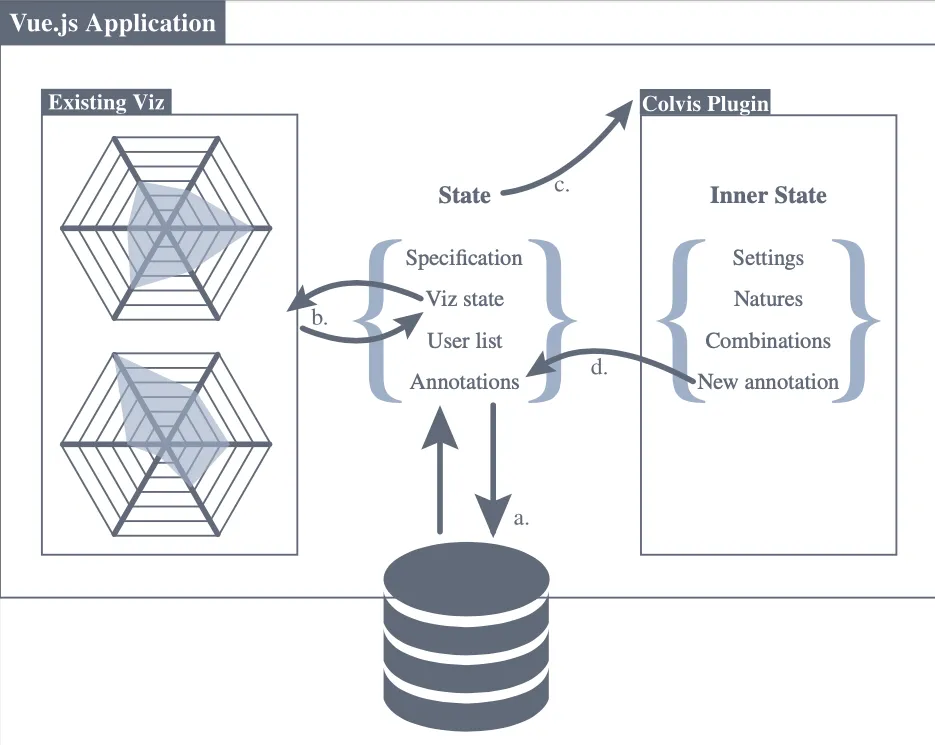Colvis - the interface
Web interface to incite analysts to foster richer annotations in exploratory data visualization.

Colvis is a JavaScript library that allows the annotation of data visualization generated by technical and academic references in the field (D3.js, Vega, Vega-lite, Voyager, etc) within a Vue.js application. It implements the results of the Human-IST Institute's research on the nature of annotations, conducted between 2017 and 2018 (see Colvis - theoritical framework). The library consists of various interface components (for entering and searching annotations), as well as a JSON specification for the annotation format.
Colvis is the concretization of my thesis topic, and is a concrete attempt to apply a theory that we developed during our research. The technological plan allowed me to develop a Vue.js plugin (compatible with the v2, requires adaptations for the recently released v3, to dive into the meanders of the D3.js and Vega libraries, and to exploit advanced properties of the SVG inline (in order to, among other things, reproduce visual markings representing data on a visualization).
For the most part, I work alone on Colvis, although a fruitful collaboration has been established n 2019 to adapt the library to Vasco, a project of the HES-SO of Valais to suggest data visualizations adapted to their structure. The "human" gains are therefore more in the order of self-discipline and perseverance in the face of niche technical challenges, which are difficult to explain to my fellow PhD students and programmers.
Abstract of the article:
Annotations produced by analysts during the exploration of a data visualization are a precious source of knowledge. Harnessing this knowledge requires a thorough structure of annotations, but also a means to acquire them without harming user engagement. The main contribution of this article is a method, taking the form of an interface, that offers a comprehensive “subject-verb-complement” set of steps for analysts to take annotations, and seamlessly translate these annotations within a prior classification framework. Technical considerations are also an integral part of this study: through a concrete web implementation, we prove the feasibility of our method, but also highlight some of the unresolved challenges that remain to be addressed. After explaining all concepts related to our work, from a literature review to JSON Specifications, we follow by showing two use cases that illustrate how the interface can work in concrete situations. We conclude with a substantial discussion of the limitations, the current state of the method and the upcoming steps for this annotation interface.